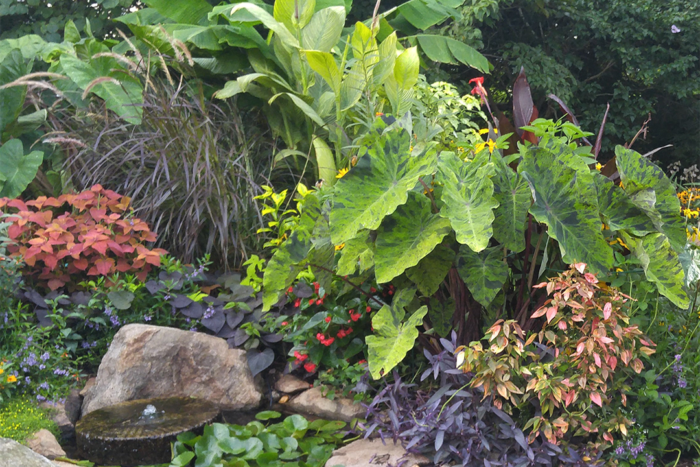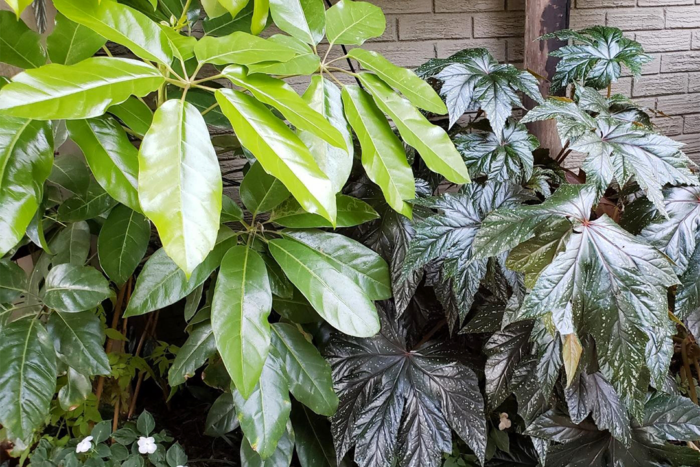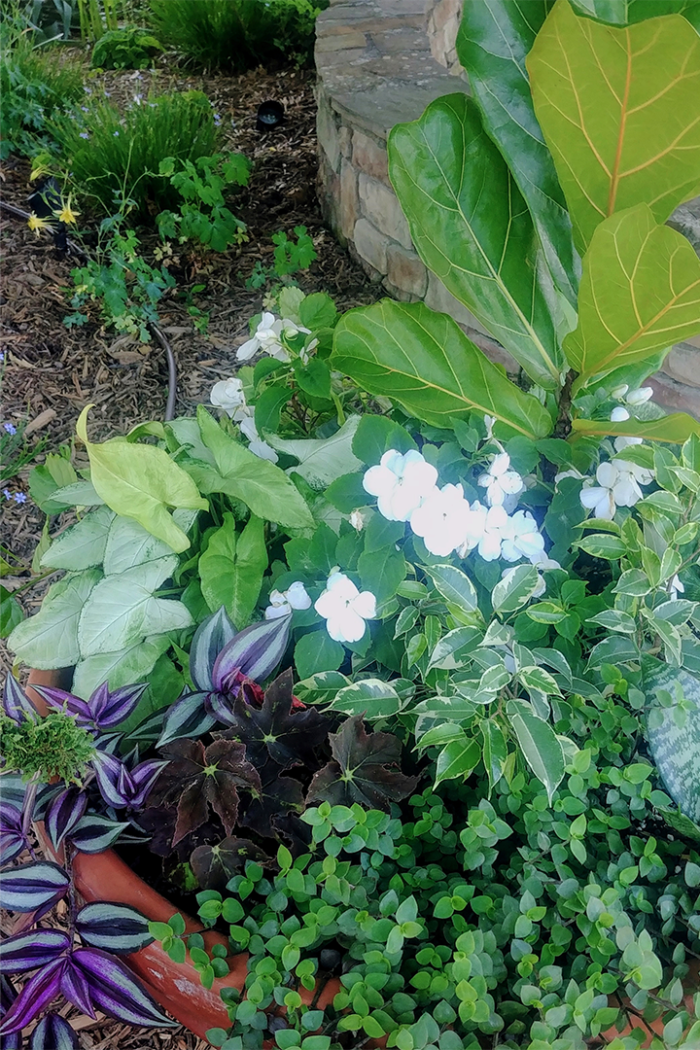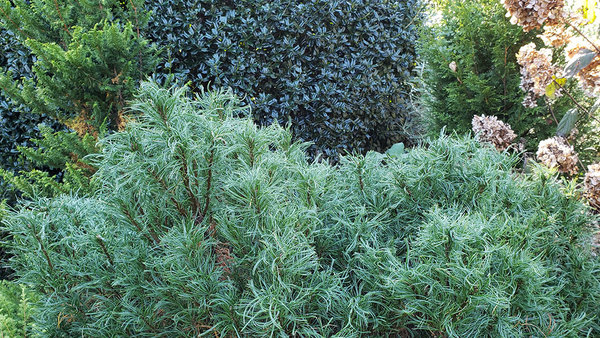
The longer I garden, the more I love seeing tropical plants growing outside of their pots, freed by adventurous and creative gardeners. Having worked at a botanical garden with a glasshouse for most of my career, I know well the cooling, calming effect of lush tropical foliage. I’m talking about the usual suspects of small conservatories and living rooms: fiddle-leaf figs, corn plants, umbrella plants, elephant ears, palms, and bananas. So when a new greenhouse manager started moving large tropical plants outdoors and combining them with hardy plants, it took me a season or two to break down the glass wall in my mind to embrace this botanical mixed media.
This is a brilliant use of plants that don’t spend the summer struggling against our heat and humidity; instead, they thrive in it! That alone scores high in my Southeastern gardening book, but the benefits don’t end there. Visually, they can bring that same cooling lushness to outdoor spaces as they do in the conservatory, providing wonderful backdrops to finer-textured blooms. Summer maintenance is low compared to the fertilizing and deadheading required of annuals and many perennials. All they require is regular moisture. It’s June, right? It’s past all recommendations for last planting, yet you still have gaps in your beds—tropical foliage to the rescue. These plants can be successfully planted all summer if you provide consistent watering. Why is this? Having come from regions of unchanging day length and no freezes, they have evolved to grow anytime there is root space and water; this is different from the seasonal growing patterns of temperate-zone plants.

Our southern summers are long enough to make planting what are essentially really large annuals worth it. It’s surprising how inexpensive specimens of the most common houseplants can be. Planted in June, they produce a growing expanse of foliage for at least five months. Most are best for shade to partial shade, but there are a few sun-lovers in the mix. No, they aren’t cold-hardy. And yes, you have to decide whether to dig, pot, and bring inside, or chop up for the compost pile come November, but that’s part of thinking outside the walls.
As tough as some of the selections in the indoor-plant section of the nursery are, they do need proper transition to their outdoor environment. First, be sure to match the plant to your light conditions. Almost all houseplants—which will be labeled low, medium, and high light for indoors—grow well in outdoor shade. However, when transitioned over 10 days or so from full shade to partial (morning sun or dappled shade), many do wonderfully in those conditions. For those that can adapt to sunny conditions, provide the same 10 days to move from shade to partial to full sun. Use the list below to guide your choices, then free your imagination and create your own cool combos to carry the garden through the dog days and beyond.

Best for mostly shade
- Corn plant / Mass cane (Dracaena spp. and cvs., Zones 9–11)
- Dumb canes (Diffenbachia and cvs., Zones 10–12)
- Umbrella plant (Schefflera spp. and cvs., Zones 10–12)
- Arrowhead plant (Syngonium and cvs., Zones 10–12)
- Philodendron (Philodendron bipinnatifidum and cvs., Zones 9–11)
Can take partial shade
- Elephant ears (Alocasia and Colocasia and cvs., Zones 8–10)
- Fiddle-leaf fig (Ficus lyrata, Zones 9–11)
- Snake plant (Sansieveria spp. and cvs., Zones 9–12)
- Angel wing and painted leaf begonias (Begonia spp. and cvs., Zones 10–12)
- Palm (Areca spp. and cvs., Zones 9–11)
Sun-tolerant
- Croton (Codiaeum variegatum, Zones 9–12)
- Palm (Areca, spp. and cvs., Zones 9–11)
- Banana (Musa and cvs., Zones 5–10, and Ensete spp. and cvs., Zones 8–10)
- Palm lily (Cordyline and cvs., Zones 9–12)
- Variegated rubber tree (Ficus elastica ‘Variegata,’ Zones 10–12)
—Paula Gross is the former assistant director of the University of North Carolina at Charlotte Botanical Gardens.


















Comments
Log in or create an account to post a comment.
Sign up Log in